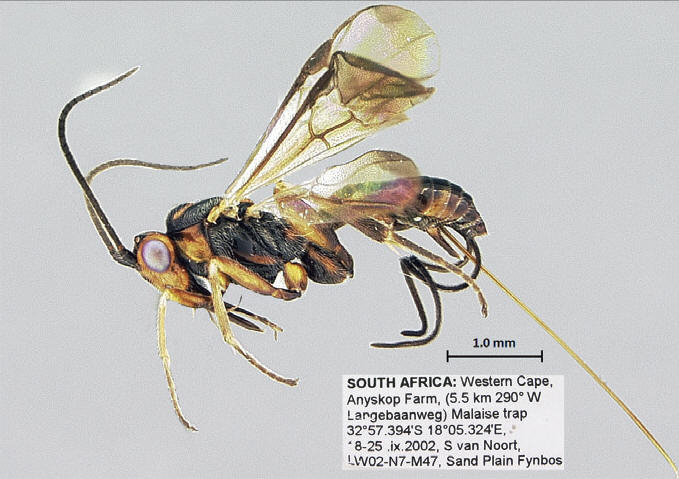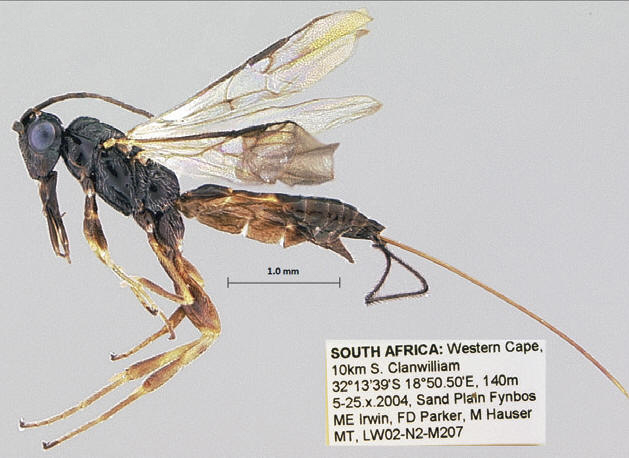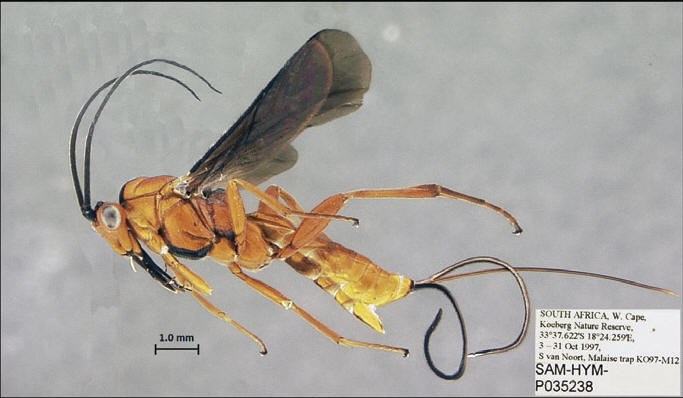 |
Camptothlipsis aagota
Tucker & Sharkey, 2012 |
 |
Camptothlipsis inertusursus
Tucker & Sharkey, 2012 |
 |
Camptothlipsis lingualongis Tucker &
Sharkey, 2012 |
Distribution
|
Afrotropical region: South
Africa (also Oriental region: Thailand, Vietnam). |
Biology |
The South African endemic Lingualongis species-group of
Camptothlipsis is hypothesised to have an obligate symbiotic
relationship with their host flowers: the host plant provides nectar and
host lepidopterans, and the wasp pollinates and protects the plant by
keeping host lepidopteran populations in check (Tucker et al., 2012).
The exceptionally elongate mouthparts comprise the glossa
which extracts nectar and is then retracted into the galeae, which
closes around the glossa enabling the nectar to be sucked into the
alimentary canal (Pucci and Sharkey, 2004). Two hypotheses were
forwarded to explain the extreme elongation of mouthparts in this group:
1) they are highly specialized nectar feeders and dependent on the
flower of the plant on which their host lepidopterans feed or 2) that
the long mouthparts facilitate the extraction of nectar from a wide
variety of flowers with both shallow and deep nectaries (Tucker et al.,
2012). |
References |
Pucci, T., &
Sharkey, M. 2004. A revision of Agathirsia Westwood (Hymenoptera:
Braconidae: Agathidinae) with notes on mouthpart evolution. Journal of Hymenoptera
Research 13:
64–107. Tucker, E.M.;
Sharkey, M.J.; Stoelb, S.A.C. 2012. A new species-group of Camptothlipsis
(Braconidae, Agathidinae) from South Africa, with notes on the evolution of long
mouthparts.
Journal of Hymenoptera research, 24: 59-74.
doi:
10.3897/JHR.24.1909
|
Credits
|
Photographs
© Erika Tucker, Mike Sharkey, Stephanie Stoelb (University of Kentucky).
|
|